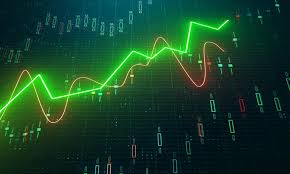Talk About Stock Index Funds (1)

As you know, ETFs are called index funds, so the vast majority of ETFs invest in indices. So what exactly is an index? What are the different indices in the financial world? What are the advantages and disadvantages of each of these different indices? Today's article is going to address these issues.
Probably the most common thing we are exposed to is stock indices. For example, on financial radio and newspapers, we often see news such as "The Shanghai Composite Index closed at XXX points today", which is short for Shanghai Stock Exchange Composite Index. The SSE Composite Index is the short form of the Shanghai Stock Exchange Composite Index.
Stock indices provide a lot of value to the public, for example, if someone asks you whether the stock went up or down today, the stock index can be used as a reference. This may seem like a simple question, but it's not easy to answer. Because every day in the stock market, some stocks go up and some go down. How do you come up with a comprehensive approach to determining the ups and downs of the stock market? Equity indices provide just such a solution.
With stock indices, even a layman who knows nothing about finance can know the ups and downs of the stock market.
The organization of stock indices is a technical discipline that deserves a little more explanation than I can expand on here. First I want to introduce you to the different ways of arranging stock indices.
Suppose there are dozens of countries in which we can invest in the stock market, and each country has hundreds of stocks. A more reasonable world stock index? We can consider the following options.
(1) Market capitalization weighting: Market capitalization weighting is the most common way of indexing stocks. This method determines the weight of each stock in the world stock index according to its market capitalization. The familiar S&P 500 index is the market capitalization weighted index.
(2) GDP weighting: This index is based on the GDP of each country, to allocate the country's weight in the world stock index. Weighting in equity indices. For example, if the world's largest GDP countries in 2015 were the United States, China and Japan, then in a world stock index The most heavily weighted stocks are those of the United States, China, and Japan, and their weightings are directly proportional to their respective GDPs. After determining the weighting for each country, a market capitalization weighting or other weighting method is selected within each country to determine the weighting of each component. Weighting of stocks.
(3) Price-weighted: A price-weighted index is based on the price of each stock in the stock market to determine its weighting in the index. One of the longest-running stock indices in the world, the Dow Jones Industrial and Commercial Index, is a typical price-weighted index. Japan's Nikkei 225 index is also a price-weighted index.
(4) Equal weight index: Equal weight index means giving the same weight to each member of the index to all stocks included in the index. For example, if the S&P index has 500 stock members, then each member is assigned a weight of 0.2%. The biggest difference between an equal-weight index and a market capitalization-weighted index is that in an equal-weight index, small stocks (such as in the S&P) 300th-500th companies) account for a much larger weighting, while large-scale stocks (such as the largest in the S&P index of (100 companies) account for a smaller share of the weight.
Another difference between an equal-weight index and a market capitalization-weighted index is that an equal-weight index requires constant rebalancing to adjust its index membership The weights. Since the market price of each stock moves at any given time, the weight of each of its members can change even after one day. deviate from the original goal of equal weighting. So theoretically, to maintain equal weights for the members of the index, the index manager would need to buy and sell at all times. Those stocks tune their positions. Buying and selling too often can lead to excessive trading fees, which can pull down investor returns.
The world's first index fund was an equal-weighted index fund.In 1971, Wells Fargo Bank (Wells (Fargo) William Fouse and John McQuown began working for the Samsonite manages the world's first index fund account, with a start-up capital of $6 million. The index managed by the fund tracked the returns of 1,500 stocks on the New York Stock Exchange, each subject to an equal weight allocation. Due to the high fees and poor returns for investors due to the frequent trading mentioned above, in 1973 Wells Fargo moved the index tracked by the account to the New York Stock Exchange. The index was switched from equal weighting to the S&P 500 (market capitalization-weighted index).
Equal-weighted stock indices have regained the attention of academics and industry professionals in recent years. In an academic paper published by Zeng and Luo in 2013, the authors back-tested the 1990-201030 annual historical returns, concluding that the S&P 500 Equal Weight Index returned 2% more per year than the S&P 500 Index or so, but this excess return is obtained before transaction costs are deducted. This means that if the transaction costs of an equal-weighted index are 2% or more higher than the transaction costs of a weighted index, then the equal-weighted index's The return would be less than that of an index-weighted index.
Other studies have also pointed out that the main reason why equal-weighted indices theoretically earn higher returns than market capitalization-weighted indices is that equal-weighted indices The risk is higher, and this risk comes mainly from liquidity and volatility ( Volatility. The higher the risk, the higher the investment return, which reflects the principle of market efficiency.







